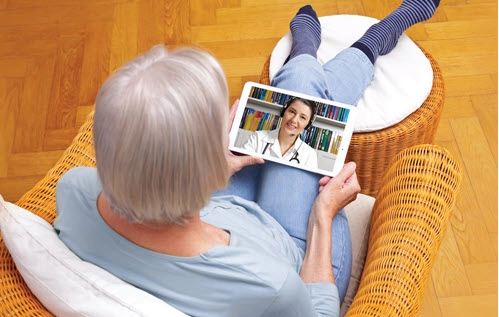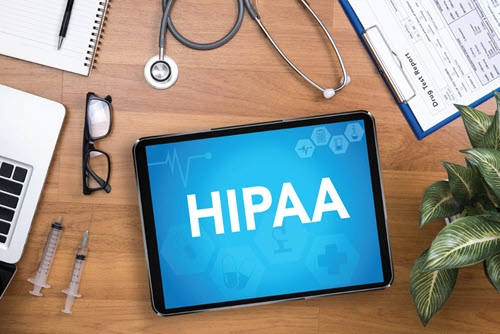Health Information Compliance Alert
Keep a Grip on HIPAA Compliance
Tip: Understand what ‘acting in good faith’ means.
If you’re stumped by the regulatory nuances associated with the Medicare telehealth expansion or the subsequent HIPAA notification of enforcement discretion, you’re not alone. Many healthcare providers are confused by the endless policy revisions and fuzzy timelines to address the public health emergency (PHE).
Reminder: Over the last few months, the Centers for Medicare & Medicaid Services (CMS) announced an expansion of telehealth benefits for providers and their patients. Due to a myriad of 1135 waivers, the changes have allowed practitioners to offer telehealth visits to patients anywhere, not just in rural areas, and in their homes rather than at a healthcare facility (see Health Information Compliance Alert, Vol. 20, Nos. 4 & 6).
Site locations used to be a major limiting factor, and that’s why the COVID-19-inspired changes are so important. “Traditionally, under the Medicare program, professional telehealth services are restricted by statute to originating site locations, defined generally as healthcare facilities and physician offices, that are located in rural areas or outside of Metropolitan Statistical Areas (MSAs),” explain attorneys Jacob J. Harper, Eric J. Knickrehm, and Scott A. Memmott with international law firm Morgan, Lewis & Bockius LLP in the Health Law Scan blog. “Medicare beneficiaries generally would not be allowed to receive telehealth services in their home[s].”
Consequently, the popularity and the benefits of the temporary telehealth flexibilities have caused many to argue that parts of the expansion should be made permanent .

See How HIPAA Fits Into the Picture
In coordination with the Medicare telehealth expansion, the HHS Office for Civil Rights (OCR) issued a HIPAA notification of enforcement discretion. The agency announced it would “not impose penalties for noncompliance with the regulatory requirements under the HIPAA Rules against covered healthcare providers in connection with the good faith provision of telehealth during the COVID-19 nationwide public health emergency,” OCR said.
Under these eased standards, providers are allowed to utilize non-public-facing technologies like FaceTime and Skype in “good faith” for telehealth visits; however, public-facing technologies like TikTok and Facebook Live, which are not private and can lead easily to the loss of protected health information (PHI), are not permitted.
Why This Matter
Details: In an FAQ set, OCR includes the following essential principles of the notification:
- It applies to all covered healthcare providers who provide telehealth services.
- Covered providers can use “professional judgment” to determine the services they offer through telehealth, and those services will be covered under the enforcement discretion.
- It pertains to all patients without limitations, including those that do not have Medicare or Medicaid benefits.
- When covered providers utilize telehealth in “good faith” during the PHE, they will not be subject to HIPAA Privacy, Security, or Breach Rule violations.
- It only concerns telehealth during the PHE; therefore, HIPAA compliance should still be utilized in other care situations.
- There is no expiration, and OCR will issue a notice to end the enforcement discretion.
“OCR [also] noted in its FAQs that many platforms employ end-to-end encryption and limit access to authorized participants,” explain attorneys Audrey Davis and Andrew Kuder with national law firm Epstein, Becker & Green PC. “In other words, OCR seems to be comfortable enough with the protections offered by these technologies for the time being.”
Davis and Kuder add, “However, it’s unclear if OCR will remain comfortable in the long-term, as it’s too soon to determine the waiver’s risk to patient privacy and security.”
Know the Basics on “Good Faith” Provisions
Though OCR doesn’t go into great detail on what it considers a “good faith” effort under the notification, it does offer direction on using telehealth in “bad faith.” Using telehealth for nefarious
purposes, usurping patients’ PHI for marketing and without authorization, or implementing public-facing apps would all be considered “bad faith” practices and a violation of HIPAA.
The enforcement discretion only works for covered providers if they’re abiding in “good faith” by the OCR’s guidelines. Practitioners should try to keep in line with these provisions.
Davis and Kuder advise covered providers to take the following actions:
- Utilize clinical expertise: Exercise professional judgment on a case-by-case basis as to whether telehealth is appropriate for the specific patient under their specific circumstances.
- Manage apps: If use of HIPAA-compliant technology is not possible, use a technology platform included in OCR’s list of “non-public facing” remote communication products in its published FAQs (and, similarly, avoid those technologies OCR identifies as unacceptable).
- Explain the risks: At the beginning of the service, inform the patient of the privacy risks associated with use of the relevant technology.
- Implement IT: If the technology offers any encryption or enhanced privacy settings, ensure those settings are enabled.
- Find a private place: Render telehealth services from private locations and ask that patients locate themselves in a private setting if possible. If the patient cannot be in a completely private location, the provider should speak in a lowered voice and ask that the patient do the same (or ask if the patient would rather reschedule).
- Know states’ laws upfront: Ensure that you are not violating any state licensing laws if rendering services to a patient located in another state. While some of these laws may currently be waived, it is important to check for updated information from the relevant state licensing board prior to rendering services to someone located in another state.

Bottom line: With the pandemic expected to stretch through next year, organizations should continue to update both their telehealth and HIPAA policies accordingly. It’s a good idea to check HHS, OCR, and CMS updates frequently with more revisions and changes expected in the coming months. As always, utilize all of your resources and make HIPAA compliance a priority — even with the enforcement discretion in place.
Resource: Review the OCR FAQs on telehealth and HIPAA at www.hhs.gov/sites/default/files/telehealth-faqs-508.pdf.
Disclaimer: Information related to COVID-19 is changing rapidly. This information was accurate at the time of writing. Be sure to stay tuned to future issues of Health Information Compliance Alert for more information.
Health Information Compliance Alert
- Case Study:
Keep a Grip on HIPAA Compliance
Tip: Understand what ‘acting in good faith’ means. If you’re stumped by the regulatory nuances [...] - Is the Telehealth Expansion Here to Stay?
Legislators want to make updates permanent. There’s no denying that telehealth has been a boon [...] - Interoperability Policy:
Data Sharing Is Central Theme of New CMS Rule
Check out the health IT requirements sooner rather than later. Even before the pandemic put [...] - Health It Compliance:
Prepare Now for These 5 Data Policy Rollouts
Hint: Data blocking faux pas will go live eventually. With COVID-19 dominating the news, you [...] - COVID-19:
Consider 3 Steps Before Resuming In-Person Encounters
Tip: Utilize IT resources to check in with patients. Despite current spikes in COVID-19 cases, [...]

